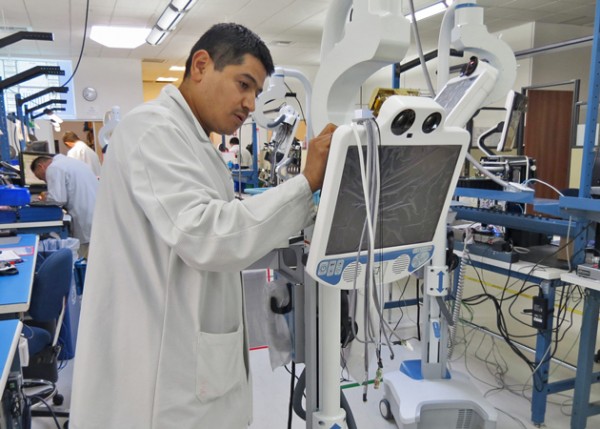The IRS Medical Device Tax And Its Negative Impact

The United States is home to over 6,900 medical device companies. These businesses have estimated sales of more than $115 billion annually. Medical device manufacturers are now required by the IRS to pay a 2.3 percent device excise tax. It is estimated that this tax costs the industry over $193 million every other month. American medical device companies are required to compete globally within their industry. This excise tax is causing harm to an industry that provides hundreds of thousand of jobs in the American job market.
It’s a known fact that medical devices are a central part of providing routine healthcare. Any person who visits a hospital’s emergency room has a diagnostic procedure or even some type of medical treatment will have it done by using some type of medical device. This could include simple devices as a blood-pressure cuff, a stethoscope and more. A person could also utilize an MRI, X-ray, CT scan and other major medical devices as part of their treatment or examination.
The medical device industry’s international competition has increased. This has created a need to outsource some research and development to other countries. This option is not popular and doesn’t help with maintaining all of the advanced research centers medical device manufacturers have built in the United States. When an additional tax burden of more than $28 billion is added to medical device companies, it creates pressure on them to seek ways to cut costs by moving certain operations outside the United States.
The medical device industry is in a state of continuous advancement. Every year innovations are made available to medical professionals and their patients to overcome injury and disease. Exciting advances are made that provide physicians new tools to identify disease and injury and provide life-saving treatment.
Many of these advances have been able to improve healthcare and decrease downstream health costs. The IRS medical tax has placed serious limitations on available resources used to fund research and development. The result of this decrease is a delay for patients to have access to the latest available medical care.
A recent analysis of the medical device industry showed that venture capital investment in the industry has fallen by more than 16 percent since 2013. This is a downward trend that has been occurring for a number of years. Less investment is going toward medical device ideas and more toward companies in the later stages of development.
Many industry experts find this trend unsettling. The early-stage development of medical devices is where the most significant innovations can occur. This will have a direct negative impact on improving patient care in the future.
Many anticipated plant expansions by medical device manufacturers have been cut back or eliminated as a direct result of paying this tax. In some cases, this tax has eliminated up to 15 percent of the research and develop funds available to companies. Other companies have been forced to cut thousands of jobs.
Currently, a number of medical device companies intend to dramatically decrease hiring as well as cut down on their workforce. This tax has resulted in the manufacturers passing the cost of this tax onto their customers. Doing this has caused a lowering of orders and a slowing of business operations.
Hundreds of medical device companies, as well as trade groups, are organizing and finding ways to oppose this tax. Organizations within the industry such as the Medical Device Manufacturers Association (MDMA) and others have started serious efforts at lobbying to have this tax repealed. Some key political figures have expressed their concern that the repeal of this tax will lead to efforts by other industries to repeal taxes that have been placed on them.
Mark Sadaka from Pharma Watch Dog, the leading Hazardous Chemical Attorney, has a national practice and works with clients from New York to Alaska.
